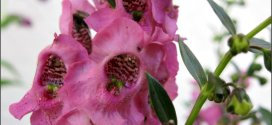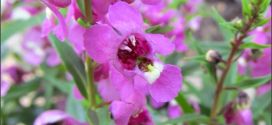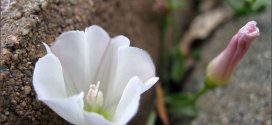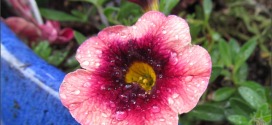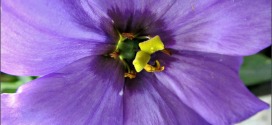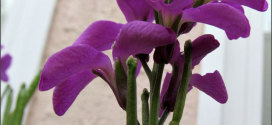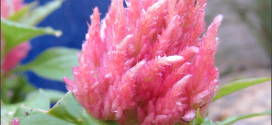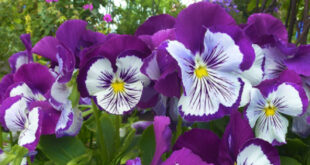Foxglove, Digitalis purpurea. This plant is attractive to bees, butterflies and/or birds. Average Water Needs; Water regularly; do not overwater. Self-sows freely; deadhead if you do not want volunteer seedlings next season. Other details: May be a noxious weed or invasive. The bad news is that foxglove (Digitalis purpurea) does not occur as a perennial. It is a biennial, meaning that …
Read More »Tag Archives: annual
Angelonia
Native to Mexico and the West Indies, angelonia (sometimes also called summer snapdragon) is an upright, glabrous, somewhat bushy, tropical perennial that is noted for its long summer bloom of small snapdragon-like flowers. Plants typically grow 12-18” tall. Stems are clad with narrow, oblong to lanceolate, green leaves (to 3” long) with toothed margins. Foliage is slightly aromatic. Bluish-purple flowers …
Read More »Nicotiana
Gardeners who enjoy growing Nicotiana, enjoy great, fragrant perfume. It’s a flower that is grown for it’s fragrance. Nicotiana attract hummingbirds to their trumpet shaped flowers. Nicotiana plants are easy to grow. Flowers begin to appear and bloom in the early summer. The plant will rebloom all season. Flowers open up in late afternoon, and are on fragrant display all …
Read More »Morning Glory
If you want to cover your fence FAST, the best choice would probably have to be Morning Glories. Morning Glories are very fast growing plants, that depending on the species, may be annual or tender perennial vines with light green, heart shaped leaves. They produce a non-stop show of large, blue, pink, purple, red, or white trumpet shaped, sometimes fragrant …
Read More »Coralberry Punch Superbell
Superbells (Calibrachoa) look like tiny petunias, but there is nothing tiny about their show-stopping color from spring until fall. This series of tender perennials can be grown as an annual in colder regions but survives as a perennial in U.S Department of Agriculture plant hardiness zones 9b through 11b. When provided with the proper care, these plants produce abundant 1-inch …
Read More »Lisianthius – Forever Blue
Lisianthus flowers are native to American prairies. And lisianthus is one of the best cut flowers — it will last in the vase for 2 to 3 weeks. Lisianthus can be challenging to grow. They’re extremely tricky to grow from seed, so start with established seedlings. Plant them in rich, well-drained soil in full sun after all danger of frost …
Read More »Stock
Stock offers a wonderfully spicy, distinctive scent. In Sunnyvale, plant it in spring as earlier as February — this annual thrives in cool temperatures and stops blooming once hot weather arrives. It’s especially wonderful in window boxes and planters at nose level, where its sometimes subtle effect can best be appreciated. Stock is slightly spirelike and comes in a wide …
Read More »Celosia
Bright and bold, cockscomb (Celosia argenta) blooms from summer until early fall. The convoluted flower heads have a shape similar to cauliflower. These annual flowers look garish in the wrong setting, so plan your companion plants carefully. They make excellent cut flowers that last a long time in the vase. They also dry well and can be used in crafts. …
Read More »Calibrochoa
Formerly known as million bells, calibrachoa is an easy to grow, low-maintenance plant that displays masses of bell-shaped, petunia-like blooms from spring until the first light frost. The blooms cover long, cascading branches that make the plant ideal for containers or hanging baskets. Sun-loving calibrachoa reaches heights of 6 to 10 inches and displays a rainbow of bright colors, depending …
Read More »Viola “Whopping Purple Whiskers”
Viola “Whopping Purple Whiskers”Huge, 2.5″ across, intensely whiskered blooms of velvety purple and white! Free flowering over a long period of time (deadheading extends it even more) on a compact form, 9″ tall and 10″ across. Wonderful in pots. Rich soil for amazing show! Edible!
Read More »